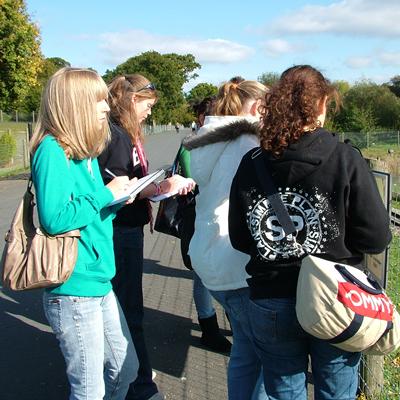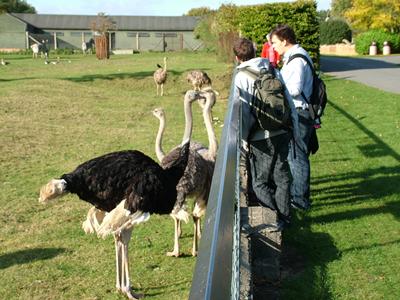Tracing Darwin’s discoveries - And it’s all on the doorstep!

Unlocking the dichotomous key
It has become a tradition over the past few years for first-year students of Biology and Zoology to take a trip to Marwell Wildlife, near Winchester, every autumn. Here they have a chance to study the wide range of animals, birds and reptiles on view and broaden their knowledge by taking an initiative test.
This year the challenge revolved around the bicentenary of Charles Darwin’s birth and the 150 years since the publication of his seminal work, “On the Origin of Species”.
Part of the visit tradition is that the sun has to shine, and as the early clouds lifted, this year was no exception. Big cats, wildebeest, kudu, penguins, flamingos, pygmy hippos and dozens more of the 250 species on display were all out enjoying the good weather, many with their young.

The freshers were divided into small groups and asked to rediscover the “Tree of Life” by creating a classification process known as a dichotomous key, a comparison tool that allows the inquirer to identify items in the natural world. They had to find 40 types of animal, record their Latin names and work out how the species are similar and how they differ in key traits, and the characteristics that help to classify the organism. They could also make sketches and take photographs to help them with their task. They were then asked to submit their completed key and submit it for marking as part of their module.
Zoology student Mairead McGuirk was excited about all the animals she had been able to see at close quarters. “There were loads of fantastic animals,” she says. “We even saw the cheetahs running at speed, which was really cool. A practical like this really brings the subject alive.”
Biology undergraduate Helena Wallace was equally enthusiastic. “I’ve been as a visitor before”, she explains, “but this is more focussed and I really enjoyed it.” Student Rob Hunt, who studies Zoology, added, “Apart from helping with the course, this really brings people together.”
Each student was given a map and a “passport”, for which they collected stamps at various stopping points in four areas of the park.
Postgraduate demonstrators helped students log their finds. Mandela Fernandez-Grandon, who is studying for a PhD in entomology, is a demonstrator for the semester. He says “It’s a good chance for new students to see the animals and remind them why they joined the course. They also get a chance to meet other students, which they might not have done otherwise. They can see the zoo from another perspective, rather than just as a visitor.”
“Most people have been to Marwell Wildlife,” explains Dr Joel Parker, who organises the trip. “But normally they just wander around and look at the animals. I like to set a challenge and give our students something they need to research, using biological classifications and terminology.”
“Making practicals problem-based and giving the students a puzzle to solve always keeps their interest and encourages them to learn,’ says Joel. “This trip also helps them to work in teams and broadens their knowledge of animal life.”
Marwell Wildlife is an action oriented charity, leading conservation projects in Africa and the UK. It seeks to address causes of extinction, such as habitat loss and the unsustainable exploitation of wildlife, which it achieves through a range of species-and-habitat conservation programmes. These include habitat restoration, community engagement and the management and reintroduction of threatened species.
The charity aims to encourage understanding of, and inspire care for, the natural world. It relies on the generous support of fundraisers and visitors to its 140-acre zoological park in Hampshire to finance its conservation work and help secure a better future for endangered wildlife for generations to come.
What's related
Links to external websites
The University cannot accept responsibility for external websites.